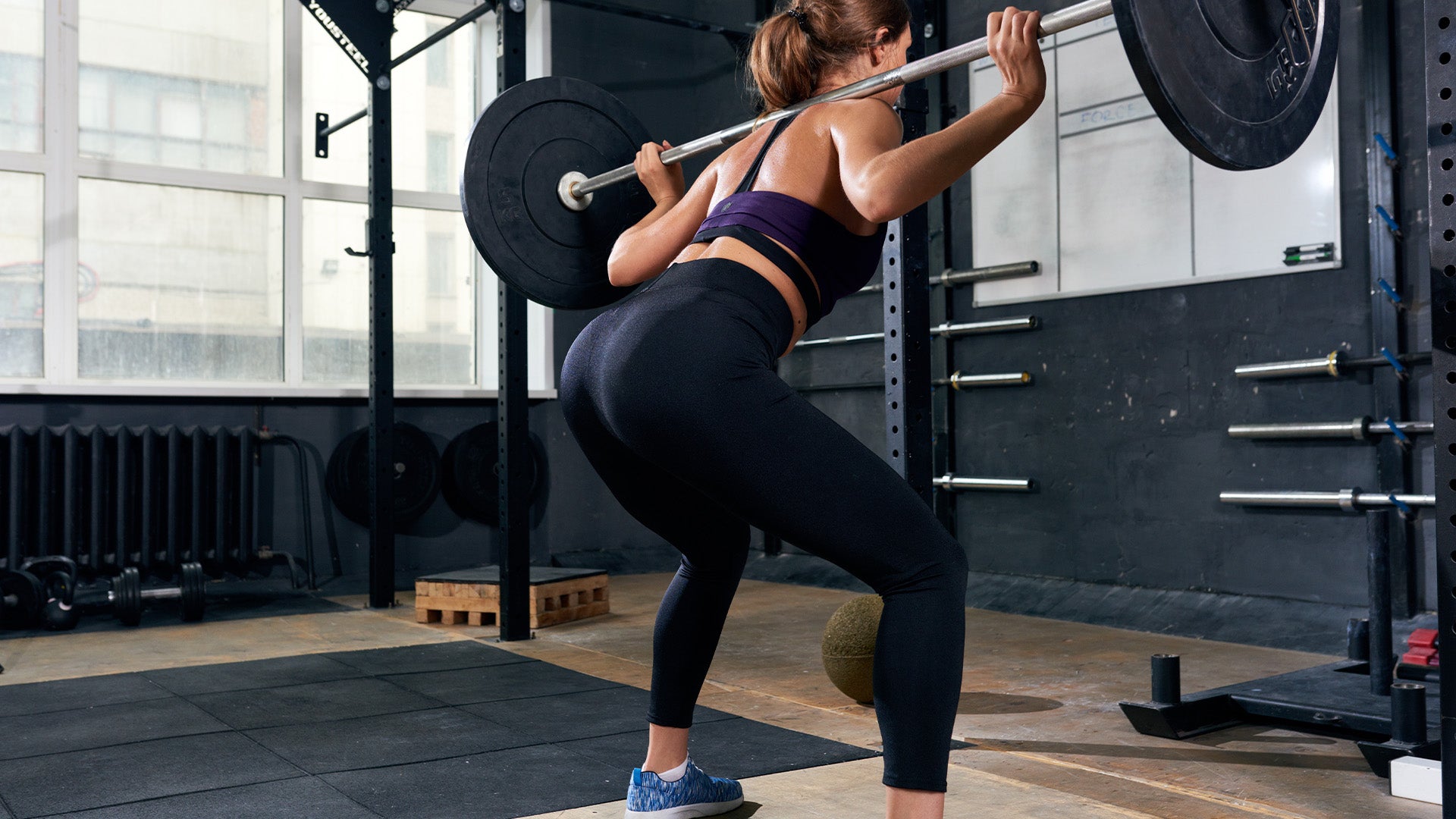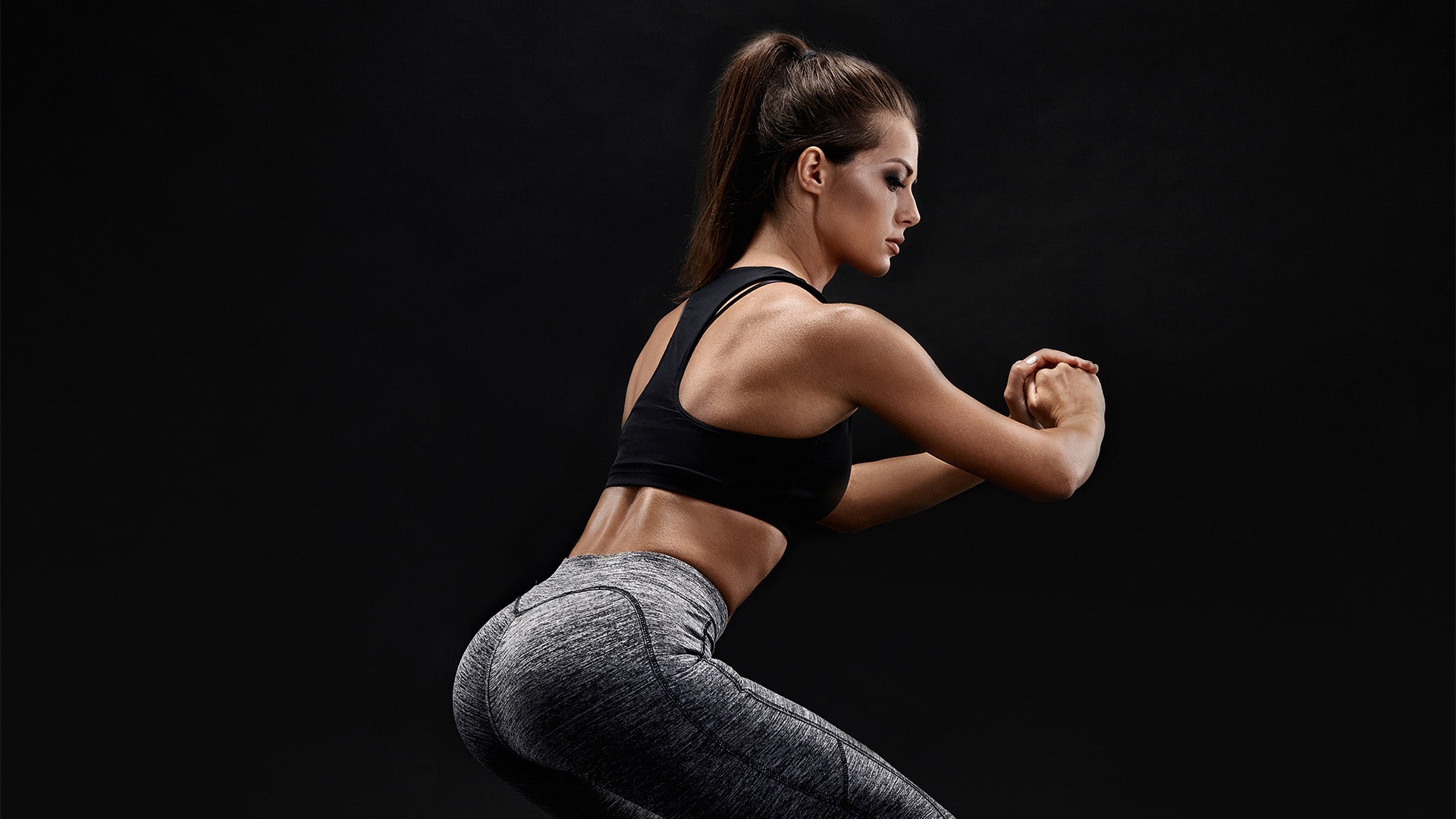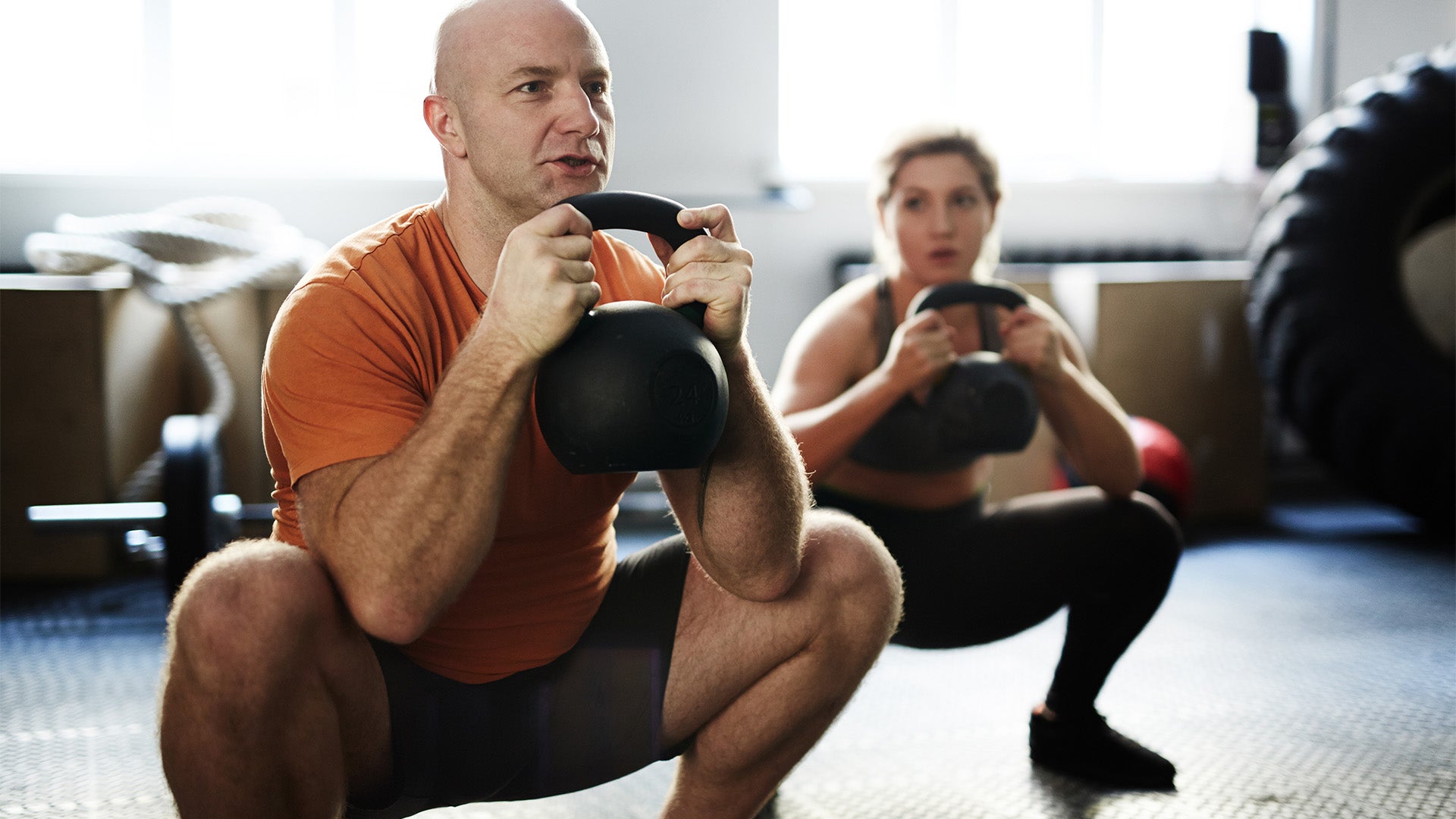Squats are one of the basic movements that any strength trainer should learn and master in order to grow the muscles of the lower body. And while squats are one of the most popular and common exercises placed in the programming of fitness classes, personal training sessions, and more — not many people do them properly.
Even the most advanced powerlifters can struggle to correct butt wink, a common problem that occurs at the bottom of a squat. Let’s take a look at what butt wink is, why it can be problematic, and what you can do to fix it.
What Is Butt Wink?

You’ve probably heard a trainer or coach tell you to keep your chest lifted and keep the spine “neutral” during a squat. This means that the goal is to keep the spine as straight as possible during each rep. But sometimes, it’s natural for the lower back to round at the bottom of a squat.
Butt wink is the posterior tilt of the pelvis that causes the lumbar spine to go into flexion. In other words, your pelvis tilts inward towards your belly button, causing your lower back to round away from the floor at the bottom portion of a squat.
Butt wink can occur in all squat variations — the back squat, front squat, sumo squat, goblet squat, suitcase squat, and more.
So what’s the big deal? Why does it matter if the spine bends during a squat? Failing to keep a neutral spine during a squat (or any exercise) increases the load placed on the back, which increases the risk of sacroiliac (SI) joint issues, herniated discs, or lower back pain.
This is usually only a big deal when you start adding heavy loads to your squats, which should be the goal when strength training. But if you’re doing bodyweight squats, butt wink is probably not a major problem. Either way, it’s always a good idea to try to master proper exercise form.
What Causes Butt Wink?
Not everyone experiences butt wink during a squat, but it is a common feature of many people’s forms. It’s usually related to either mobility issues or structural issues.
As far as mobility goes, having tight hamstrings is one of the main culprits. Having tight hamstrings can limit the range of motion of your quads, which requires you to recruit the muscles and joints of your lumbar spine to finish out the rep.
With that said, the hamstrings need to be really tight for this to be the cause. This is because the hamstrings are not lengthened or shortened much during each squat.
You can test to see if butt wink might be caused by a mobility or stability issue by performing a short drill. Start in a quadruped position with hands and feet planted against a wall. Bring your glutes back towards the wall and see if there is a tilt at the back of the spine. If there is, you likely have tight hamstrings, so do a few stretches before your squat session.
It’s more likely that butt wink is caused by a structural component in which the hip joints are just structured in a way that prevents you from getting a full range of motion. Unfortunately, this is not something that any type of mobility or stability training can address.
Hip socket depth is one of the main reasons people experience butt wink that is often neglected in the fitness realm, because this joint cannot be stretched or trained without surgery. This means that people with less range of motion at the hip joint will never be able to get the same range of motion in a squat compared to others.
But that doesn’t mean you can’t do squats, and it also doesn’t mean you can’t do squats correctly. Let’s take a look at some ways to “fix” butt wink.
How Can You “Fix” Butt Wink?

Since butt wink can be caused by an anatomical feature that cannot be corrected, you can’t necessarily “fix” it. With that said, you can still get the most out of every rep with a few simple modifications.
Widen Your Stance
Something as simple as bringing your feet out a little wider than hip-width or shoulder-width can do wonders for your squat form. While it will target your quads a bit less and your glutes a bit more, this allows you to get more depth at the hip joint to get deeper into your squat without needing to tilt the pelvis forward.
You can even widen your stance further into a sumo squat to target the hips and glutes a bit more, regardless of if you experience butt wink or not. Sumo squats recruit the muscles of the lower body in a way that traditional squats are unable to match.
Practice
Some people might be experiencing butt wink simply because they’ve never actually gotten a full range of motion in their squats, to begin with. These individuals just have no clue what to actually do when they finish a rep in the first place, so by practicing your squats, you can train your body to complete them properly.
Try doing a goblet squat with one weight held at your chest, and drive your glutes down to the floor as low as you can possibly go. Keep your chest lifted with your shoulders up and back, tightening the core to ensure that the lower spine does not bend inwards. From here, press your feet through the floor back into the starting position.
It can be helpful to have a spotter to make sure you’re not tilting your pelvis inwards at the bottom of the rep. You can also record yourself to see if butt wink is affecting your form so you can practice making corrections the next time you hit the gym.
Reduce Range of Motion
If you notice that your spine is tiling inward at the bottom of a squat, it might also be that your legs are just a lot longer than your upper body is able to handle. Especially if you’re on the taller side, you might just need to reduce your range of motion and drop your glutes as low to the floor as you can while still maintaining good form.
Ankle Mobility Stretches
Limited ankle mobility might be another reason why you’re experiencing butt wink at the bottom of your squats. You can try mobilizing the ankle joint through simple stretches like ankle rotations or ankle flexion. These are especially helpful when you use a band to add some resistance to strengthen and lubricate the ankle joints.
Personal Training
Getting a personal trainer can help you to master your squat form, as well as the form of any other exercise. Sometimes, it is just helpful to get the assistance of a professional to better approach your workouts for safety and effectiveness.
What Is the Importance of Good Squat Form?
It’s always important to have good form during any exercise, but since squatting is one of the most essential functional movements that many other exercises are based on, this is a move that you want to be able to do with ease.
Good squat form reduces injury risk. When you squat properly, not only do you release excess tension from the lower back, but you also reduce excess pressure on the hips, knees, and ankles. Squats can be dangerous when you start to add heavy weight if you’ve still not mastered the proper form.
But even outside of that, proper squat form can recruit the muscles that you want to work more effectively. Butt wink puts tension on the lower back, which will naturally not allow you to drive as much weight as you want in order to grow your legs. When you can nail form, you will notice that you can more easily enhance your muscle gains.
What Are the Different Types of Squats?

There are many different types of squats, and some of them are more advanced than others. If you feel yourself experiencing butt wink, it might also be because you’re doing a variation that is just a little too advanced for this current stage in your fitness journey.
Bodyweight Squats
It’s never too late to master the basics, and doing an amazing bodyweight squat is more impressive than being able to squat hundreds of pounds with poor form. Start with bodyweight squats and increase hip mobility, ankle mobility, and knee mobility until you’re able to work up to weighted versions.
Goblet Squats
Goblet squats are one of the easiest weighted versions of a squat to master because the weight is distributed on the anterior (front) side of the body. This reduces the stress on the lower back and is generally easier compared to back squats.
Front squats, or goblet squats, are done by holding one dumbbell like a goblet at your chest.
Barbell Squats
Barbell squats are one of the most advanced squat variations you’ll see mostly in powerlifting, but if you can master the form, barbell squats target the quads and glutes better than most other variations. With a barbell back squat, you’ll place the barbell on your shoulder blades at the top of the thoracic spine.
The issue with squats in traditional strength training is that you lose activation of certain muscle groups at different angles during a range of motion. For instance, you lose quad activation at the top portion of a squat, whereas they are most active at the bottom of the rep. This is a byproduct of using traditional weights, but what if you could maximize hypertrophy at every moment in a rep?
Speede uses AI technology to adjust the resistance during your rep to maximize muscle output. This means that even though the velocity of movement stays the same, your level of resistance changes. That equates to the perfect level of resistance at every single second of your rep.
Activating your muscles to the extreme at every angle means you’ll be able to see results in just a fraction of the time compared to traditional strength training. But the best way to see the difference is to feel it for yourself.
Check out Speede today and start working towards the strongest version of yourself.
In Conclusion
Butt wink is a common mistake seen in squatting where the pelvis tilts, causing the lower back to round at the bottom of the movement. This can cause excess load and pressure on the lumbar spine, which can increase the risk of disc herniation and more.
Butt wink is most often caused by either tight hamstrings or structural issues at the hip joint. Either way, you can address it through practice, reducing the range of motion, or widening your squat stance.
You can also master the squat by using the right piece of equipment to challenge you at every angle of your rep. The Speede Pro is the perfect addition to your gym to help members get the most out of every single one of their lifts. Plus, built-in form tracking and AI give you instant feedback on your form, correcting problems with alignment and balance before they start.
The easiest way for you to see the difference is to feel it. Get in touch with us or order the Speede Challenger or Pro today to kickstart yourself toward an even stronger version of yourself.
Sources:
Posterior & Anterior Pelvic Tilt: How Do You Fix It? | NASM

